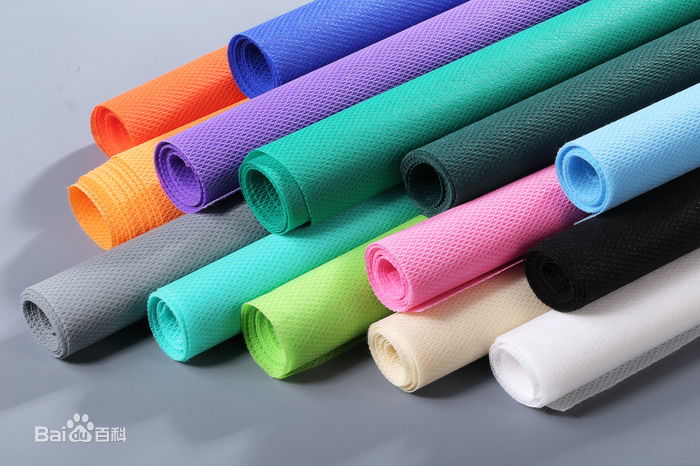What is Non woven Material?
Non woven Fabric:
Non-woven fabric (English name: Non Woven Fabric or Nonwoven cloth), also known as non-woven fabric, is composed of oriented or random fibers. It is called cloth because of its appearance and certain properties.
Non-woven fabrics are moisture-proof, breathable, flexible, lightweight, non-combustible, easy to decompose, non-toxic and non-irritating, rich in color, inexpensive, recyclable and so on. For example, more polypropylene (pp material) pellets are used as raw materials, which are produced by continuous high-temperature melting, spinning, spreading, and hot-pressing coiling.
Non-woven fabrics do not have warp and weft threads. They are very convenient to cut and sew, and they are lightweight and easy to shape. They are loved by handmade enthusiasts.
Because it is a kind of fabric that does not require spinning and weaving, it just aligns or randomly arranges short textile fibers or filaments to form a web structure, and then uses mechanical, thermal bonding or chemical methods to strengthen it.
It is not interwoven and knitted by individual yarns, but the fibers are directly bonded together by physical methods, so when you get the sticky scale in your clothes, you will find that It is impossible to draw a single thread. Non-woven fabrics break through the traditional textile principles, and have the characteristics of short process flow, fast production rate, high output, low cost, wide use, and multiple raw material sources.
The relationship between nonwovens and spunbonds:
Spunbond and non-woven fabrics are subordinate. There are many production processes for the manufacture of non-woven fabrics, of which spunbond is one of the non-woven fabric production processes.
Spunbond non-woven fabrics (including spunbond, meltblown, hot-rolled, and spunlace, most of the non-woven fabrics produced on the market today are produced by spunbond)
Non-woven fabrics include polyester, polypropylene, nylon, spandex, acrylic, etc .; different components have completely different non-woven styles. Spunbond fabrics usually refer to polyester spunbond and polypropylene spunbond; the styles of these two fabrics are very similar and can only be determined through high temperature testing.
Non-woven fabric is a kind of non-woven fabric. It uses high polymer chips, short fibers or filaments to air-fiber or mechanically mesh the fiber, and then it is strengthened by hydroentanglement, needle punching, or hot rolling, and finally finishing. Formed non-woven cloth. The new type of fiber products with soft, breathable and flat structure has the advantages of not producing fiber shavings, strong, durable, silky soft, and also a kind of reinforcing material. It also has a cotton feel. Compared with cotton, non-woven Cloth bags are easy to shape and cheap to build.

Advantage:
1. Light weight: polypropylene resin is used as the main raw material for production, the proportion is only 0.9, only three-fifths of cotton, fluffy and feel good.
2. Softness: It is composed of fine fibers (2-3D) and is light-point hot-melt adhesive molding. The finished product is moderately soft and comfortable.
3. Water repellency and breathability: Polypropylene chips do not absorb water, and the moisture content is zero. The finished product has good water repellency. It is composed of 100% fiber with porosity and good air permeability.
Non-woven polypropylene
Non-woven polypropylene
4. Non-toxic and non-irritating: The product is produced according to FDA food-grade raw materials, contains no other chemical ingredients, stable performance, non-toxic, non-odor, and does not irritate the skin.
5. Antibacterial and anti-chemical agents: Polypropylene is a chemically blunt substance, does not worm, and can isolate the erosion of bacteria and insects in the liquid.
6. Antibacterial. The product is water-extracting, does not mold, and can isolate the erosion of bacteria and insects in the liquid, and does not mold.
7. Good physical properties. It is made of polypropylene spun directly into a net for thermal bonding. The strength of the product is better than that of ordinary staple fiber products. The strength is non-directional and the strength in the vertical and horizontal directions is similar.
8. In terms of environmental protection, the raw material of most non-woven fabrics used is polypropylene, while the raw material of plastic bags is polyethylene. Although the two substances have similar names, their chemical structures are quite different. The chemical molecular structure of polyethylene has considerable stability and is extremely difficult to degrade, so plastic bags take 300 years to decompose; while the chemical structure of polypropylene is not strong, the molecular chain can be easily broken, which can effectively degrade. , And enter the next environmental cycle in a non-toxic form, a non-woven shopping bag can be completely decomposed in 90 days. In addition, non-woven shopping bags can be reused more than 10 times, and the environmental pollution degree after disposal is only 10% of that of plastic bags.
Disadvantages:
1) Compared with woven fabrics, its strength and durability are poor.
2) Do not wash like other fabrics.
3) The fibers are arranged in a certain direction, so they are easy to split from the right angle and so on. Therefore, the improvement of production methods is mainly focused on the improvement of preventing splitting.

- PREV:Non woven products can be seen everywhere
- NEXT:没有了!
